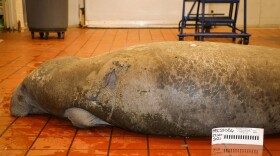-
Rampant pollution caused manatees to starve. Florida waters are getting worse.
-
It returned the permitting authority to the U.S. Army Corps of Engineers.
-
They filed the federal lawsuit after around 215 million gallons of wastewater was discharged into Tampa Bay in 2021. It said the discharges caused harmful algae blooms and fish kills.
-
His ruling that the U.S. Fish and Wildlife Service and the U.S. Environmental Protection Agency violated the Endangered Species Act shifts power away from the state.
-
The ungainly yet graceful wood stork, which was on the brink of extinction in 1984, has rebounded dramatically in Florida and other Southern states, officials say.
-
Residents living in low-income households across the country are telling advocates, "We're sometimes having to make a choice. What do I pay this month? Do I pay my water bill and my sewer bill? Do I pay my gas bill? Do pay my electric bill? Do I pay for my medications?"
-
Twelve years after the BP Deepwater Horizon oil spill, bottlenose dolphins continue to face heart and lung conditions, low reproductive success and other devastating health impacts. But the disaster also led to unprecedented innovations and insights in dolphin science.
-
Florida’s estuaries once teemed with clams, oysters and other bivalves that helped keep waters clean and seagrasses healthy. By the mid-20th century, only a fraction of the state’s vast shellfish beds and reefs remained. Can a small clam make a big difference in serious water pollution hotspots like the Indian River Lagoon?
-
Generations of advocates and scientists have worked to protect Lake Alice, but no single administrative unit of the flagship university is tasked with caring for its signature water body.
-
In a region known for its natural water, some families that rely on private wells are living out of bottles and jugs, filtered pitchers and faucets.
-
Hundreds of Florida waters are considered “impaired” for fish consumption. As a result the Florida Department of Health advises that most fish caught in the state’s waters shouldn’t be eaten more than twice a week. But that message does not always get through to subsistence fishers.
-
Florida’s pristine waters are its calling card for tourists, who are now returning to the state in record numbers. But what happens when crushing numbers of visitors harm the natural environment that draws them?
Play Live Radio
Next Up:
0:00
0:00
Available On Air Stations











